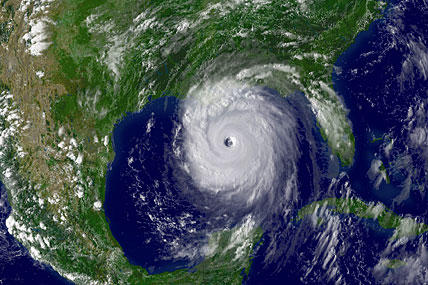Home Maintenance Tips for the Summer
June 1 marks the start of hurricane season. If you live in a hurricane region, start preparing by purchasing storm shutters or plywood to cover windows, clearing debris from your gutters and cleaning up any clutter around your yard.
Preparing for Hurricanes: Review Your Coverage
Getting Your Home Hurricane-Ready
Before the Next Emergency, Get Your Home Finances in Order
Rise Up Against Flood Damage
To help reduce water damage if your home is flooded during a summer storm, elevate the following items:
- Large appliances, such as the washer and dryer.
- Electrical system components, including fuse and circuit breaker boxes, meters, switches and outlets.
- Furnace.
- Water heater.
- Air-conditioning unit.
This not only can prevent damage but reduces the risk of a short circuit fire and hastens the cleanup and repair process. The Federal Alliance for Safe Homes recommends that all electrical system components be raised at least a foot above the 100-year flood level, as determined by the National Flood Insurance Program.
Do You Live in a Flood Zone?
Flood maps have changed recently, so you could be at increased risk and not realize it. Visit floodsmart.gov for a Flood Map Update Schedule or to get more flood facts.
After the Storm
The risk isn't necessarily over once a storm has passed. Stay informed by monitoring local news updates, and be on the lookout for downed power lines or gas leaks. Consider having a professional inspect your home for damage, gas leaks or electrical problems.
Frequently Asked Questions: Claims on usaa.com or Your Mobile Device
Reduce Risks from High Winds
Summer storms can bring damaging winds. To protect yourself and your property, consider that:
- FEMA recommends permanent storm shutters made of aluminum or steel that can be easily closed when a storm approaches.
- Attached structures can be particularly vulnerable to high winds. Use this checklist from the Insurance Institute for Business and Home Safety to evaluate the risk of attached structures on your property.
- A safe room can help provide shelter during a storm. The Federal Alliance for Safe Homes says safe rooms should be designed to withstand wind speeds up to 250 mph and should be structurally isolated from the main structure of your home.
Taping Windows Won't Protect Against Storm Damage
Many people believe the myth that duct tape or window film can protect windows during storms. They don’t. Instead, protect windows with shutters, wood or another solid material.
Go Tapeless Campaign (Federal Alliance for Safe Homes)
Safe Rooms (Federal Alliance for Safe Homes)
Safety Tips During High Wind Weather (U.S. Air Force)
Monthly Reminder
- Check the outside of your home for maintenance needs.
- Does it need a new coat of paint?
- Does the brick or stucco have cracks that should be repaired?
- Is the material chipping or crumbling?
- Are areas around windows and doors in need of caulking?
Regular maintenance can prevent water damage, rot and mold, and prevent the need for costly repairs in the future.



